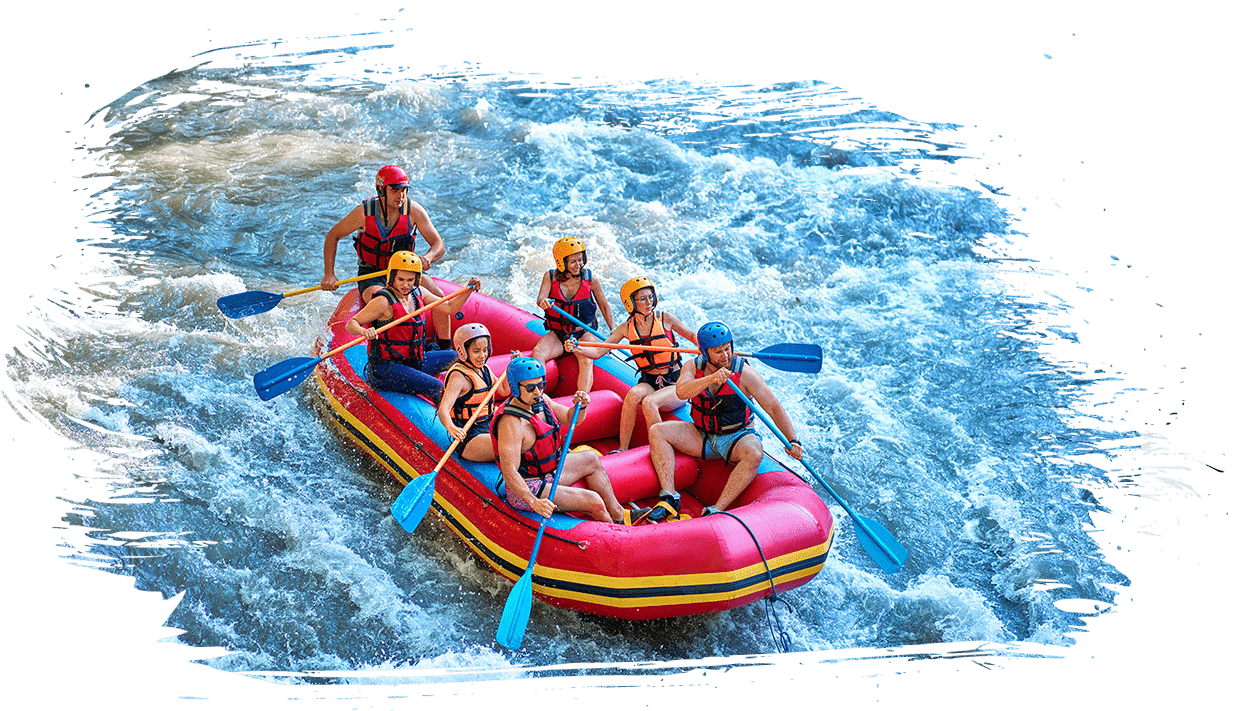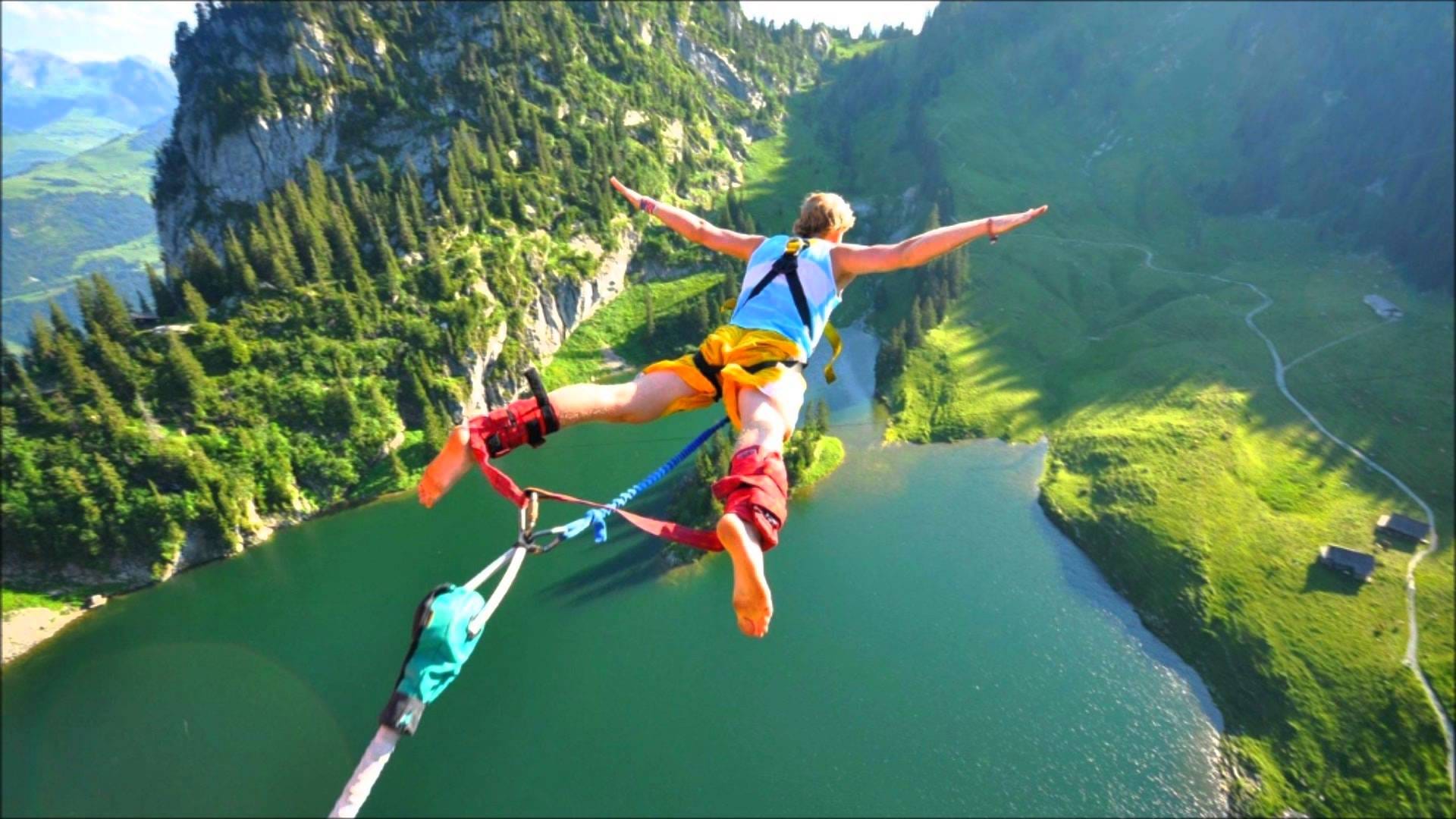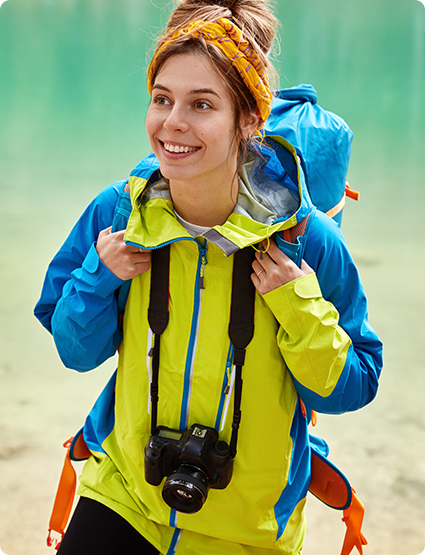

Rishikesh, a serene town nestled in the foothills of the Himalayas in the Indian state of Uttarakhand, is famously known as the “Yoga Capital of the World.” However, beyond its spiritual and yogic allure, Rishikesh has gained international repute as a premier destination for white-water rafting. The powerful, frothy waters of the Ganges River offer a thrilling experience that attracts adventurers from across the globe.
The Ganges River, sacred to millions, originates from the Gangotri Glacier and flows through Rishikesh, providing an ideal setting for rafting. The river’s journey from the icy heights to the plains creates a series of rapids that vary in difficulty, making it suitable for both novices and seasoned rafters. This unique combination of spiritual serenity and adrenaline-pumping adventure is what sets Rishikesh apart.
This 9-kilometer stretch is ideal for beginners and families. The rapids are relatively mild, with names like “Sweet Sixteen” and “Body Surfing Rapid” offering a gentle yet exciting introduction to the sport. This section also allows rafters to enjoy body surfing and cliff jumping.
A 16-kilometer route, this stretch is the most popular among enthusiasts. It features moderate rapids such as “Roller Coaster,” “Golf Course,” and “Club House,” providing a balanced mix of excitement and scenic beauty.
Spanning 24 kilometers, this route is for those seeking a more challenging adventure. The rapids, including “Three Blind Mice” and “Crossfire,” demand teamwork and skill, making it a thrilling experience.
This 36-kilometer stretch is the ultimate challenge for experienced rafters. The infamous “The Wall” rapid is particularly daunting, with its powerful currents and large waves.
The ideal time for rafting in Rishikesh is from late September to mid-June. The monsoon season (July to September) is generally avoided due to the high risk of floods and strong currents. The post-monsoon period brings clear skies and invigorated rapids, making it perfect for rafting. The winter months offer cooler temperatures and a different kind of beauty, though the water can be quite cold.
Safety is paramount in rafting, especially on the Ganges. Several reputable operators in Rishikesh offer guided rafting tours with experienced instructors. These professionals ensure that participants are equipped with essential safety gear, including life jackets, helmets, and paddles. Briefings and training sessions are conducted to familiarize rafters with commands and techniques.
It is also important for participants to be in good physical condition and inform their guides of any medical conditions. While rafting, following the guide’s instructions and maintaining composure are crucial to navigating the rapids safely.
Rishikesh offers more than just rafting. The natural beauty of the area, with its lush forests, towering mountains, and pristine riverbanks, is perfect for trekking, camping, and bird-watching. The spiritual vibe of Rishikesh, with its ashrams, temples, and yoga retreats, provides a tranquil contrast to the adrenaline rush of the rapids.
Rafting in Rishikesh combines the thrill of navigating challenging rapids with the serene beauty of the Himalayas and the spiritual essence of the Ganges, making it an unforgettable adventure for both novices and seasoned rafters.

Rishikesh, known for its spiritual and yogic heritage, is also a hotspot for adventure sports, with bungee jumping being a standout attraction. Nestled in the foothills of the Himalayas in Uttarakhand, India, Rishikesh offers one of the most exhilarating bungee jumping experiences in the country, drawing thrill-seekers from all over the world.
The primary site for bungee jumping in Rishikesh is operated by Jumpin Heights, an adventure sports company renowned for its high safety standards and expert management. The jumping platform, located in Mohan Chatti village, stands 83 meters above the ground, making it the highest bungee jump in India. The site was designed by experts from New Zealand, known for their pioneering work in adventure sports.
The journey begins with a briefing session, where trained instructors provide detailed safety instructions and prepare participants for the jump. After being harnessed and checked, jumpers are led to the edge of the platform. The leap off the platform offers an unparalleled adrenaline rush as jumpers free-fall towards the river below, only to be smoothly pulled back by the bungee cord. The sensation of flying through the air, combined with the stunning views of the surrounding forests and the Ganges River, makes this an unforgettable experience.
Safety is paramount at Jumpin Heights. The equipment used is of international standards, and regular maintenance checks ensure everything is in perfect condition. The staff includes trained professionals who ensure that every safety protocol is followed meticulously. Participants are weighed and matched with appropriate bungee cords to ensure a safe jump.
Bungee jumping in Rishikesh can be enjoyed year-round, though the period from September to June is ideal due to favorable weather conditions. The monsoon season (July to September) might see temporary closures due to safety concerns.
Rishikesh offers a plethora of activities for adventure enthusiasts. From white-water rafting and trekking to yoga and meditation, the town provides a perfect blend of thrill and tranquility.
Bungee jumping in Rishikesh, with Jumpin Heights at the helm, provides an extraordinary adventure that combines the thrill of free-falling with the serene beauty of the Himalayan foothills. It is a must-do for adrenaline junkies seeking an unforgettable experience in one of India’s most picturesque settings.

Uttarakhand, often referred to as the “Land of the Gods,” is a trekker’s paradise. Nestled in the northern part of India, it offers a diverse range of trekking experiences that cater to both beginners and seasoned adventurers. The state’s stunning landscapes, featuring snow-capped peaks, dense forests, pristine rivers, and alpine meadows, provide a breathtaking backdrop for treks.
This moderate trek, starting from Govindghat, takes you through a UNESCO World Heritage site renowned for its vibrant floral diversity. The valley, especially in July and August, bursts into a riot of colors, offering a mesmerizing sight. The trek also includes a visit to the sacred Hemkund Sahib, a high-altitude Sikh pilgrimage site.
Known for the mysterious skeletal remains found at its glacial lake, the Roopkund Trek is a challenging adventure. Starting from Lohajung, the trail passes through lush forests, alpine meadows, and snowfields, culminating at the eerie Roopkund Lake at an altitude of 5,029 meters.
Ideal for beginners, this trek takes you through the picturesque Har Ki Dun Valley, offering stunning views of Swargarohini and Bandarpoonch peaks. The trail meanders through ancient villages, pine forests, and terraced fields, providing a glimpse into the region’s rich cultural heritage.
A popular winter trek, Kedarkantha offers panoramic views of the Himalayas. Starting from Sankri village, the trail ascends through dense pine forests and opens up to expansive snowfields, making it a perfect trek for those seeking snow adventure.
The best time for trekking in Uttarakhand varies by season. Summer (April to June) is ideal for most treks, offering clear skies and pleasant weather. Monsoon treks like the Valley of Flowers are best from July to September, while winter treks such as Kedarkantha are ideal from December to March.
Trekking in Uttarakhand requires adequate preparation. Proper gear, including sturdy trekking shoes, weather-appropriate clothing, and essential supplies like water, snacks, and a first-aid kit, is crucial. Acclimatization is important, especially for high-altitude treks, to avoid altitude sickness. Hiring local guides and porters can enhance the trekking experience, providing safety and valuable insights into the region’s culture and ecology.
Trekking in Uttarakhand offers an unparalleled adventure through some of India’s most stunning landscapes. Whether it’s the floral splendor of the Valley of Flowers, the mystery of Roopkund, the cultural richness of Har Ki Dun, or the snowy trails of Kedarkantha, Uttarakhand’s treks promise an unforgettable journey into the heart of the Himalayas.
Contact Us
Company
Trip
© Copyright 2024 | All Right Reserved